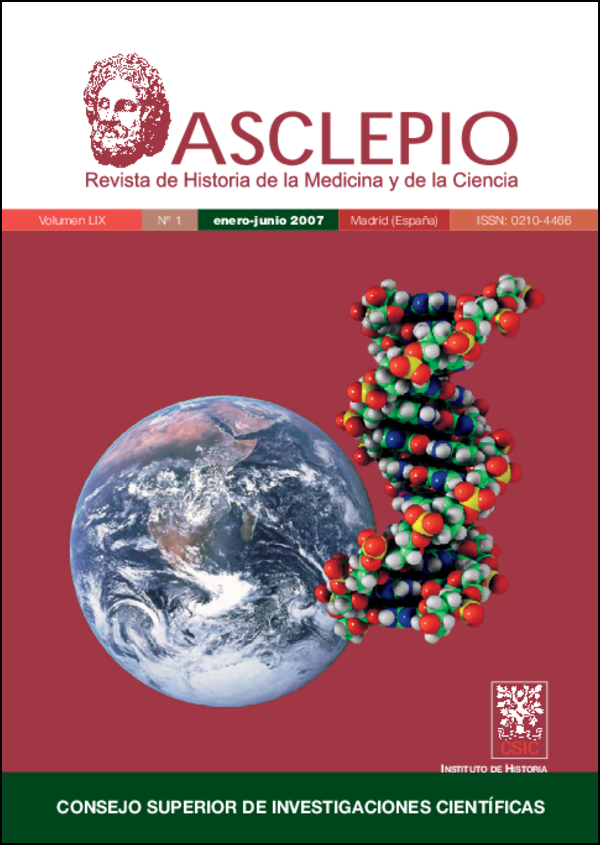The double helix revisited: a paradox of science and a paradigm of human behaviour
DOI:
https://doi.org/10.3989/asclepio.2007.v59.i1.223Keywords:
Double Helix, DNA, Watson & Crick, Wilkins, FranklinAbstract
In the modern history of Science, few breakthroughs have caused an impact comparative to the Double Helix, the three-dimensional structure of DNA proposed by Watson & Crick in 1953, an event whose 50th anniversary was widely celebrated in the non-specialist media, three years ago. Although the discovery had little transcendence at the time, it has unquestionably been of great importance ever since. The Double Helix has underlined the true biological value of nucleic acids compared with proteins, demonstrating that genes are not amorphous entities but have a specific chemical composition and adopt an ordered spatial folding pattern. Elucidation of this key configuration made it possible to establish a direct relationship between the structure and the function of macromolecules, a relationship which is not so clear in the case of proteins. During these last fifty years much has been written and argued about the circumstances surrounding the discovery and about the behaviour and attitudes of many of the protagonists. Besides Watson & Crick, other scientists, whose contribution has not been adequately recognised, played an important part in solving the Double Helix mystery. This article contains some ethical and scientific reflections which revise some of these essential contributions and throws light on the role played in history by these comparatively «unknown soldiers» of science. The Double Helix story is undoubtedly a manifestation of the human side of science and many scientists believe that the available evidence taken as a whole permits an alternative story to be written.
Downloads
Downloads
Published
How to Cite
Issue
Section
License
Copyright (c) 2007 Consejo Superior de Investigaciones Científicas (CSIC)

This work is licensed under a Creative Commons Attribution 4.0 International License.
© CSIC. Manuscripts published in both the print and online versions of this journal are the property of the Consejo Superior de Investigaciones Científicas, and quoting this source is a requirement for any partial or full reproduction.
All contents of this electronic edition, except where otherwise noted, are distributed under a Creative Commons Attribution 4.0 International (CC BY 4.0) licence. You may read the basic information and the legal text of the licence. The indication of the CC BY 4.0 licence must be expressly stated in this way when necessary.
Self-archiving in repositories, personal webpages or similar, of any version other than the final version of the work produced by the publisher, is not allowed.















